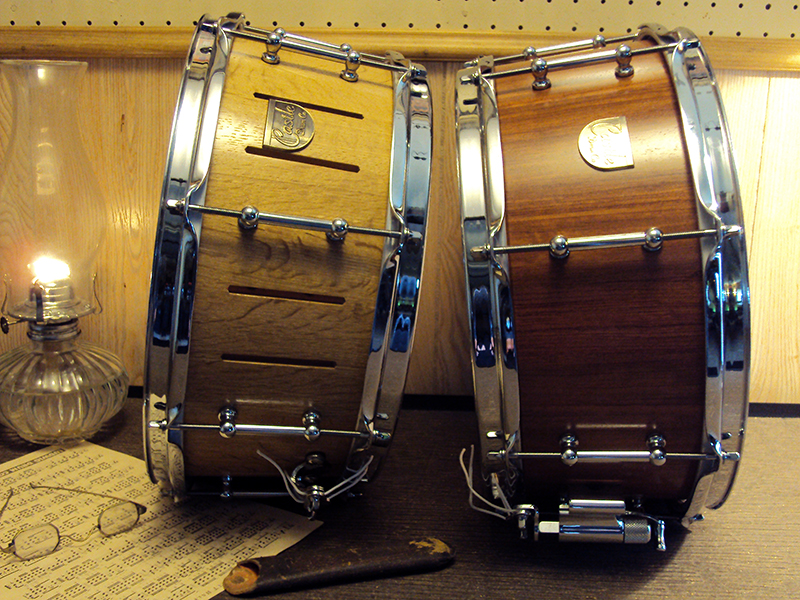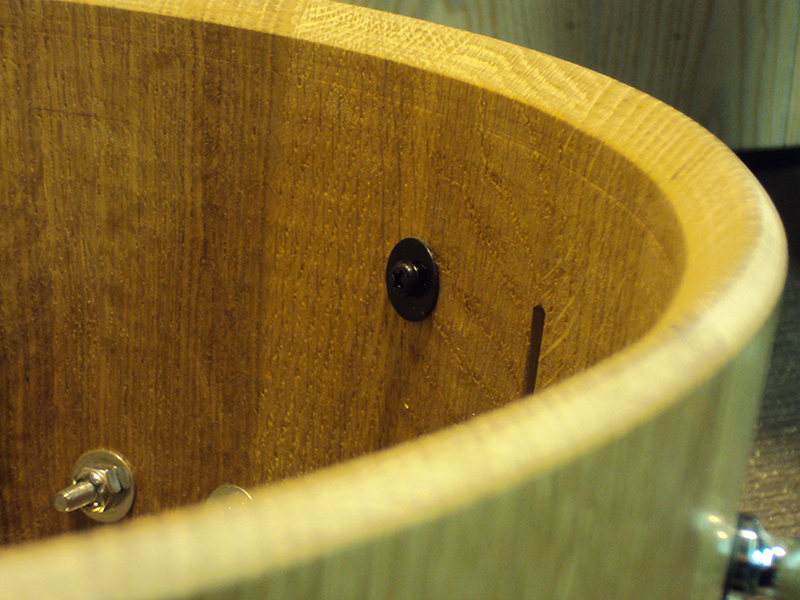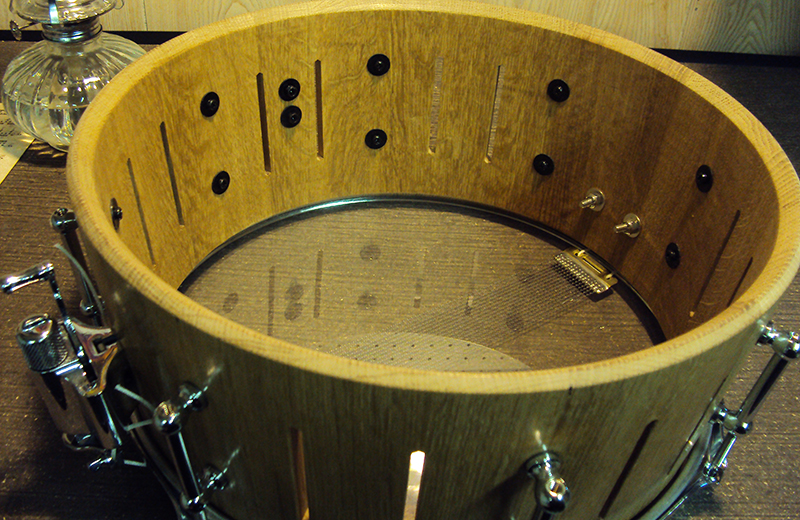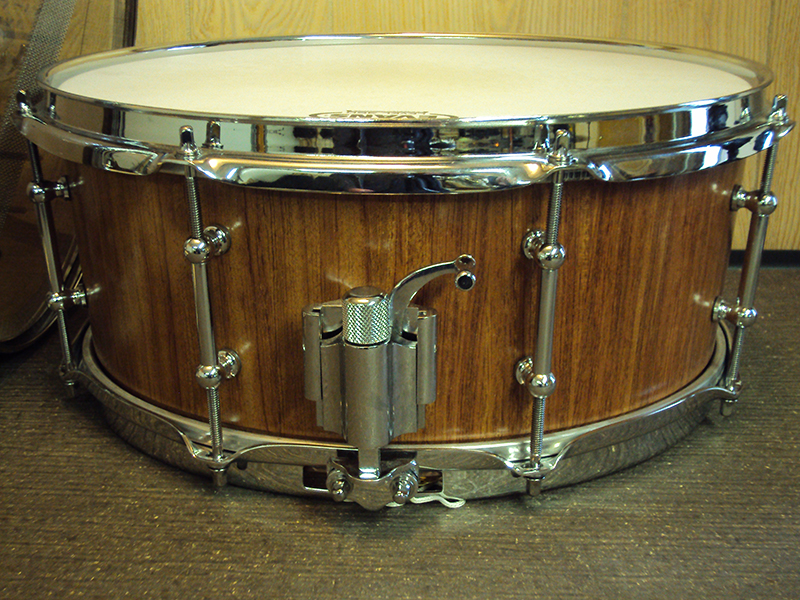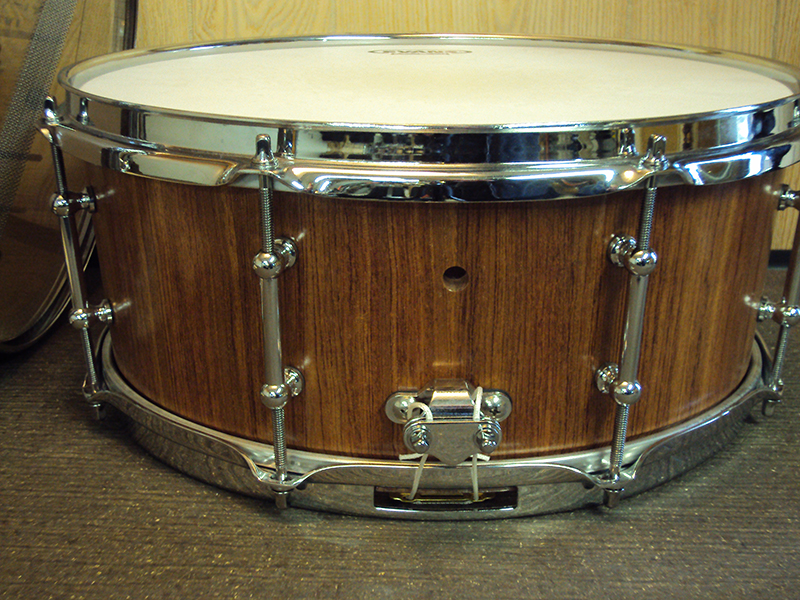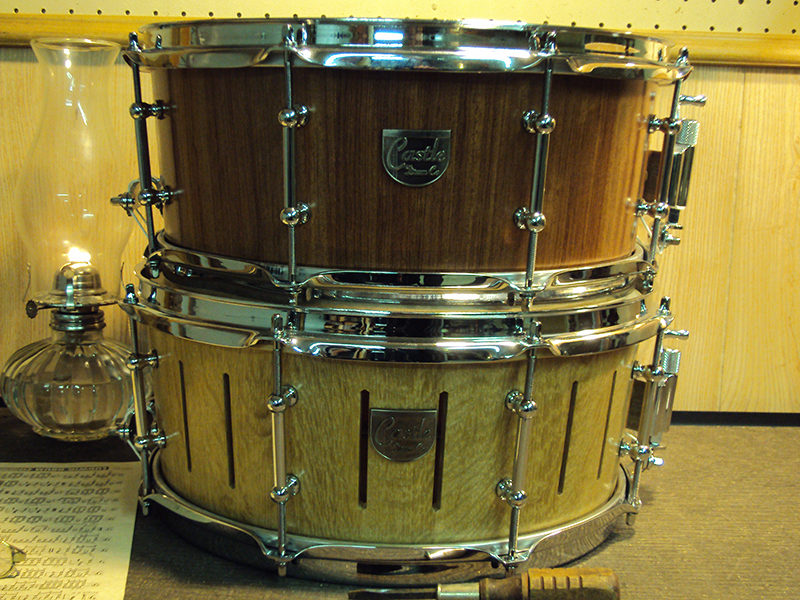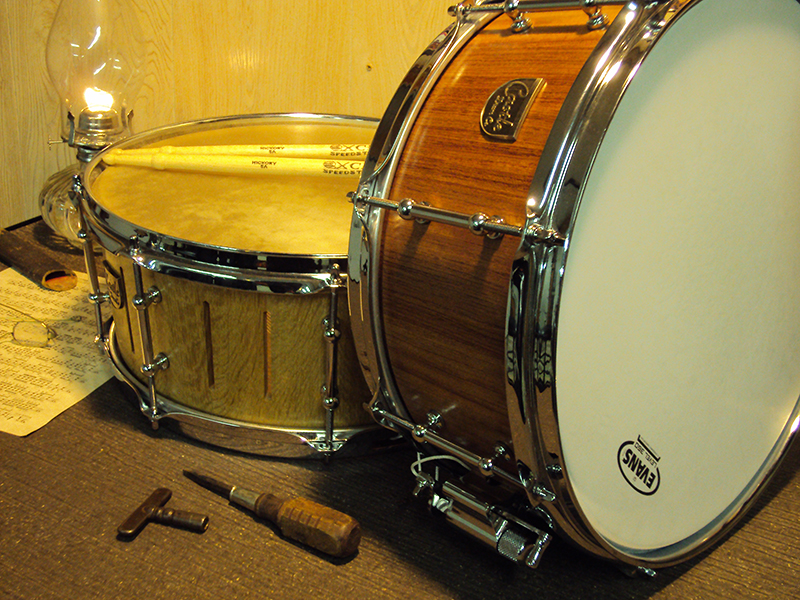Growing up in the shop of a Master Craftsman and Industrial Arts teacher, my Dad taught me a lot about making and fixing things. I learned about metal, leather, printing, mechanical drawing, and woodworking, among many other things. But the most important thing he taught me was quality. While making my rounds at the Nashville Drum Show, I saw many drums that were made with top-notch quality. But even amongst all the quality instruments that were present, some stood out a little more than others.
As I approached the Castle Drum Company’s booth, I at first thought I needed to get more sleep because the drums seemed a bit skewed. Taking a closer look I realized that my vision was fine and the drums were indeed, a bit skewed. David Cheney, the Master Craftsman behind Castle Drums, had come up with something special and a bit different. David had spent over a quarter of a century in fine woodworking as a maker of cabinets, building case work and furniture. Working with odd shaped and intricate pieces, his ability dictated a higher level of thinking about wood and the possibilities therein.
As many of us find as we become older and more proficient in life, we tend to start to figure out what we like and how we want to spend our time. David decided at one point that combining his love of woodworking and drumming might pacify that angst. After all, drums certainly can be made of wood. The one thing that he knew was that he did not want to be just another guy out there painting and assembling drums: he wanted to set himself apart from the rest of the herd. For that, David would have to dare to be different.
Keeping some of the principles of basic physics in mind, he rationed that if you could channel the sound waves of the batter head down to the snare head in a more efficient manner, you would have a more resonant snare response. Turns out he was right. By funneling the sound waves by way of a slightly conically shaped shell, that energy would become somewhat concentrated onto the snare head. With the application a vertical stave construction shell, the grain of the wood is also in turn aiding in directing the flow of sound waves toward the bottom snare head. This inner vertical grain direction also contributes to providing a little “extra” in bringing out the low-end fundamentals of the shell.
David sent me two drums to review for Not So Modern Drummer magazine: The Keystone and the Watch Tower models. Both drums were very similar but couldn’t be more different in some respects. Each shell had a 7/16” thick stave construction, six inches deep with a fourteen inch batter head. However, the shell tapered down to a thirteen inch diameter for the bottom snare head.
David told me that they did some sound testing with results indicating an average of “20% more bottom head movement, and about three decibels more off the resonant (snare) head than other drums.” These drums are very snappy and produce a great snare response with lots of volume.
The hardware on each drum was chrome plated and included triple flanged hoops, an RCK throw-off and butt, as well as tube lugs. Snares were 16 strand and Evans heads were applied top and bottom. The vent hole was left un-reinforced. Both drums came with very nicely worked 45 degree bearing edges, but, for that “vintage sound,” rounded edges are offered on request.
This Keystone model is made of Bubinga wood, while the Watch Tower drum came in White Oak. Tung oil was applied to the inside of each shell while the outside is nicely lacquered. In playing with different tunings, I thought the Bubinga drum was considerably brighter than the White Oak. The Oak had a much more porous and open grain while the Bubinga was a very tight grained wood; thus resulting in the expected and predictable timbres of each shell. Both drums exhibited a wide tuning range, both high and low. As always, I switched out the plastic heads for pre-mounted calf-skin heads from CT Pro Percussion. The calf skins worked out really nice as they added that warm and earthy sound and feel they’re known for.
I find both drums exceedingly versatile in application. However, the main difference in the two models was that the Watch Tower model has a series of vertical slits in the shell. This plays well with another basic principle of the physics of sound associated with drum design and engineering. Drums are thought to usually project sound mostly from the top and the bottom heads, throwing the sound vertically up and down. They do, however, have an inherent tendency to throw the sound horizontally through the shell. In opening up the lateral sides of the shell via the slits, the Watch Tower drum distributes the sound in all directions. My initial reaction to this is that I think this particular model is exceptionally well suited to the environments of orchestra, concert band, jazz or any “un-miced” small group situations.
The Castle Drum Co. uses a variety of hardware to choose from and includes, but not limited to: RCK, Trick and Dunnett throw-offs, die cast and triple flanged hoops, a variety of lugs, snares and heads. Wood ranges from maple, white and red oak, birch, ash, and mahogany. For something special, try an exotic wood such as zebrawood, purple heart or bubinga. If David can find it, he just might build you your next favorite drum in your choices of dimension and hardware.
I find these drums are in fact fun to play and easy to tune. They tune like a fourteen inch drum but snap like a thirteen. The stick-to-head response is really nice, offering an ease in playing involved passages at lower volumes. Back-beats are exceeding fat and full of rich snare sound. Sensitivity of snare response at the lower volumes is again, very good. As far as the higher volumes: they’re loud!
One of the more surprising and pleasant characteristics of the solid shell was that the effective strike zone was at least double the diameter of most other drums I’ve played. This certainly makes the drum much more forgiving than many if a player tends to play with a wider, wilder strike-zone. The slotted shell (Watch Tower model) did not have quite as wide a strike-zone as the solid shell due to the characteristics inherent to the open design, but was still exceedingly responsive across the head non-the-less.
In examining the Keystone model made of Bubinga wood in particular, I had a very hard time locating the individual wood segments as the joints are tight and the grain is matched as close as possible. After giving these Castle Drums a good go, I would really like to take a look at the furniture David Cheney makes. If the quality is even close, I think anyone who has any of his work must be very pleased. The craftsmanship and quality on these drums is of a very high standard. David’s passion and enthusiasm is very evident and the pride he puts in each drum is extraordinary.
Take a minute and visit the Castle Drum Co. on line. There is a very well made video with David in the shop and more models and options to ponder. If you’re looking for something unique and well made with extreme snare sound and response, not-to-mention a really big, fat back-beat, these drums deserve some real consideration.
From Lancaster County, PA…....Thoughts from the Shop.
Brian Hill

